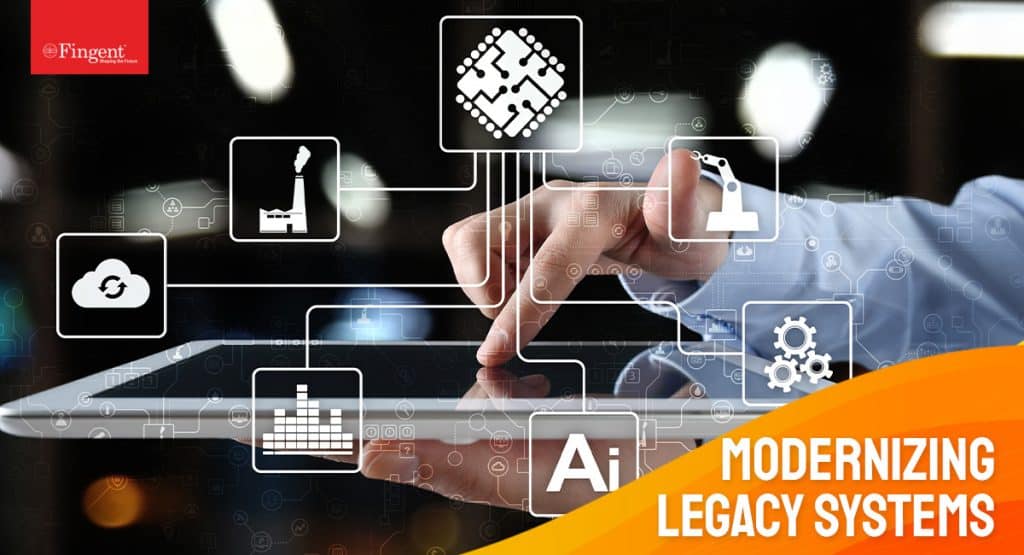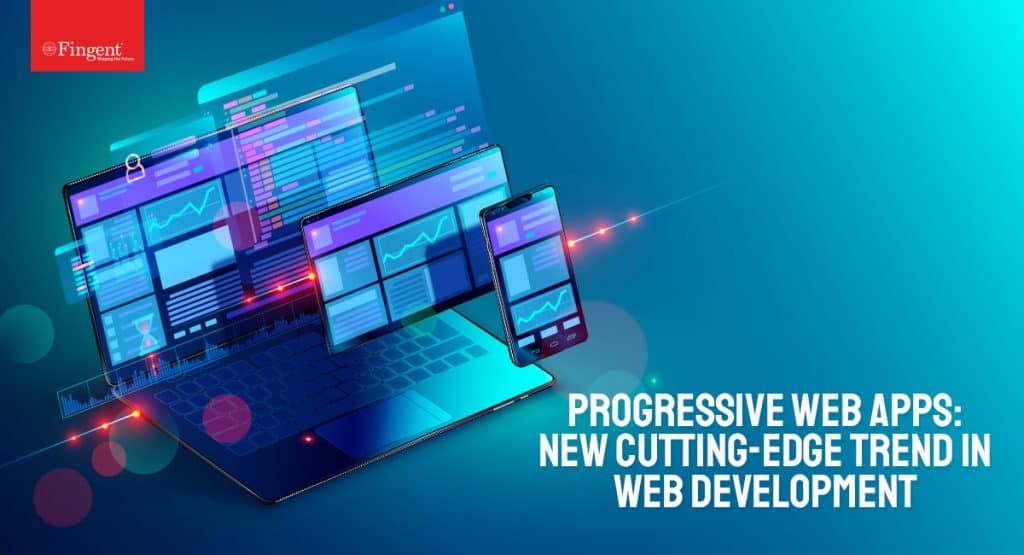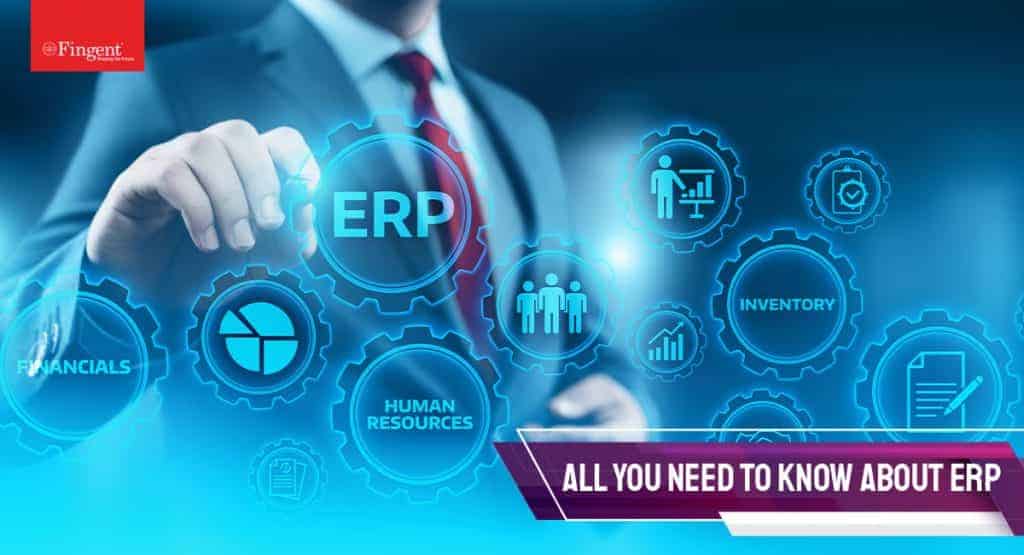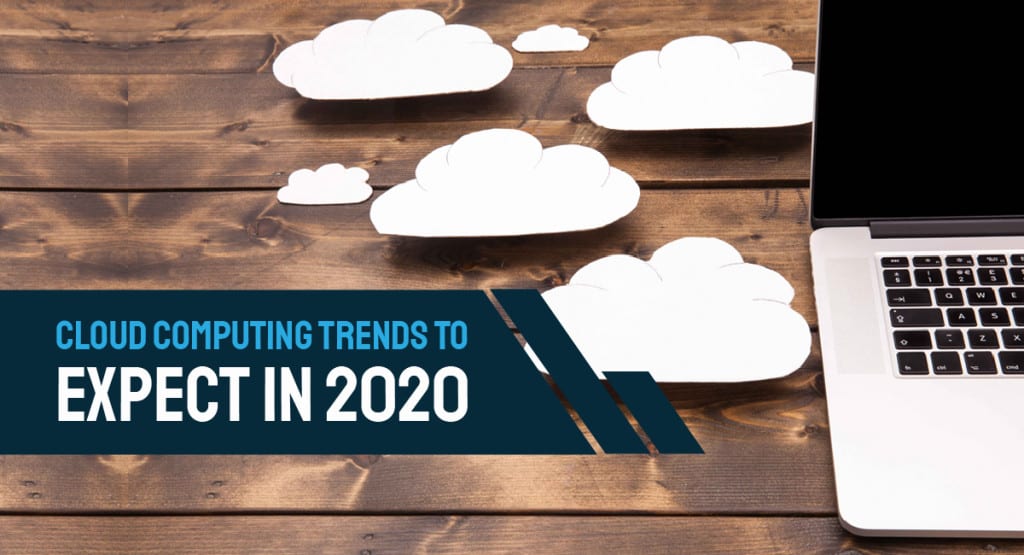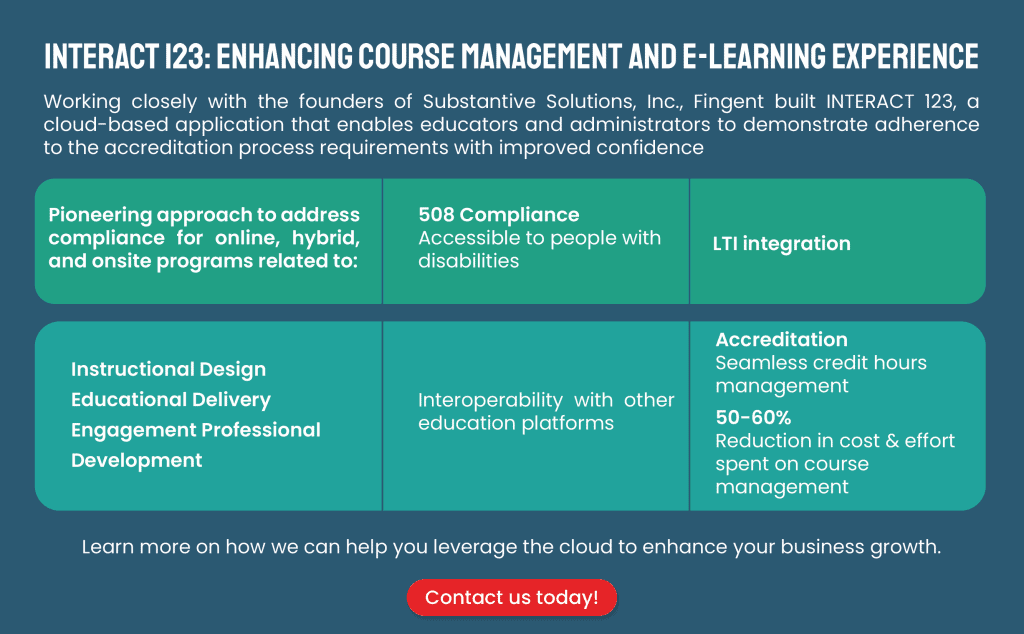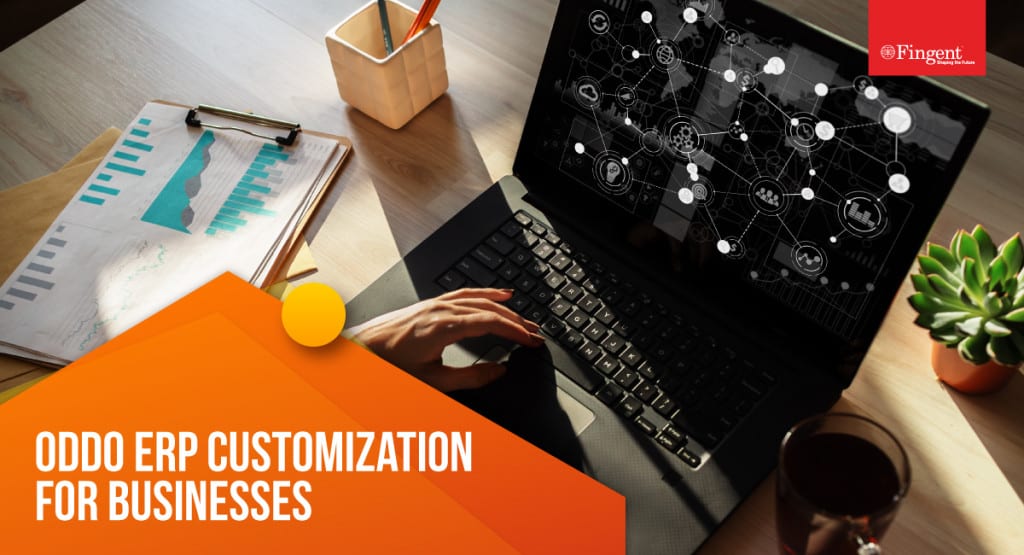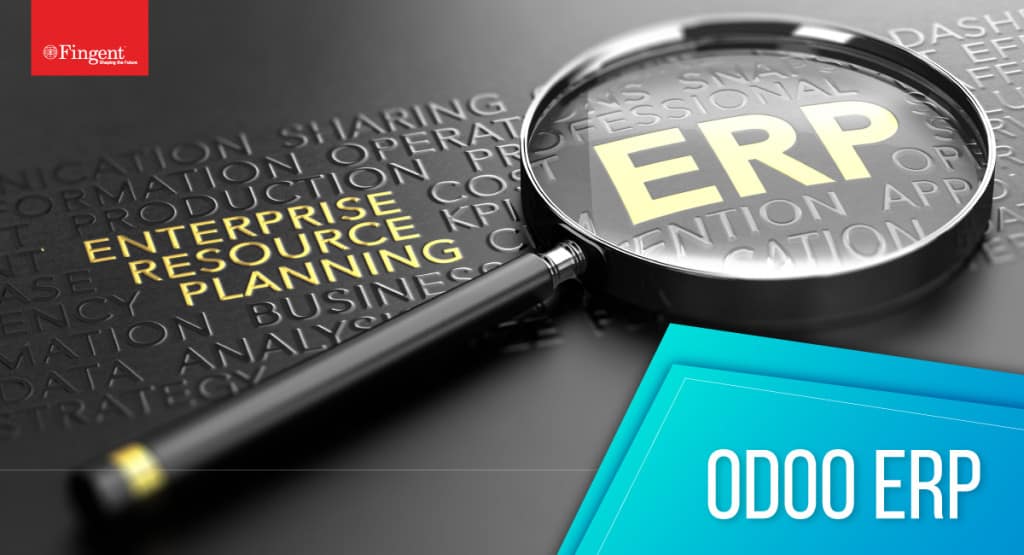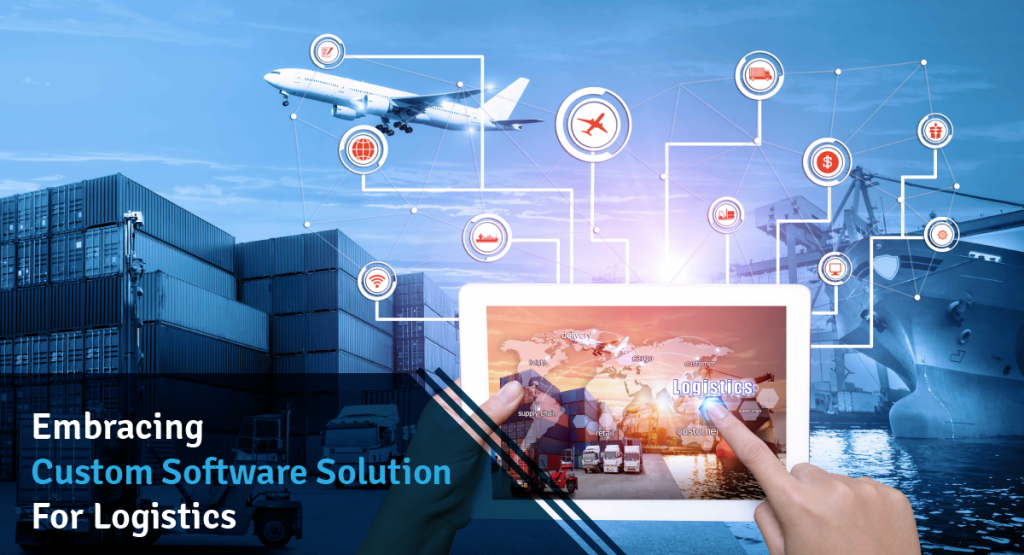Category: Enterprise Software
Stay up to date on what's new

Featured Blogs
Stay up to date on
what's new



Talk To Our Experts
Organizations are enhancing their competitiveness by prioritizing digital transformation as the global marketplace becomes increasingly crowded and interconnected.
Broadly speaking, the concept of digital transformation involves the systematic evolution of core and auxiliary business processes to take advantage of advances in computing and software systems to increase efficiencies.
However, no digital transformation initiative will be effective unless it involves an app modernization component.
Also referred to as “application modernization,” app modernization enables organizations to transform effectively, increase their competitiveness, and differentiate themselves within their respective industries.
What is App Modernization?
A “legacy” system uses outdated software or computing hardware to deliver important organizational capabilities but cannot interact with other systems or be updated effectively. App modernization is the process of addressing known issues in outdated legacy software. The issues may include:
- Software problems (“bugs”) that cannot be resolved fast enough,
- Missing features will take too long to add,
- Fragile code (changes tend to create new problems),
- Technology obsolescence (e.g., few programmers for the source code language used),
- A software vendor is out of business, etc.
Commercial off-the-shelf software (COTS) may not provide source code access, preventing an organization from addressing software issues. When pursuing app modernization for software for which source code is available, your organization can choose between one of three approaches:
- Revitalizing an application old applications
- Replacing an application technology with custom-built solutions
- Rehosting or re-platforming
Organizations that choose to revitalize old applications will be updating existing software with new capabilities and features. This may also include refactoring (editing the software to do the same things better).
Read more: Why choose custom software over commercial off-the-shelf solutions?
Other companies may elect to get rid of aging technology to replace it with new, custom-built solutions or with a COTS solution.
In some instances, though, to achieve performance improvements, you may just need to move your existing application onto a more powerful computing engine, typically today on a modern, cloud-based infrastructure — a process known as rehosting or re-platforming.
How do you know which is the best app modernization option for your needs?
Particularly old or antiquated legacy technology will need to be replaced, whereas newer solutions might be suitable for repurposing or retrofitting. Rehosting is the most pragmatic approach if an application still meets your business’s needs but is negatively impacted by your current infrastructure.
When updating existing software, your app modernization team will need to rewrite code to add new features to your solutions. While this can be a tedious and time-consuming process, it may be more efficient than rebuilding a new solution from the ground up.
Opting for the more labor-intensive choice of modernizing by replacing legacy systems may provide more substantial long-term benefits altogether, especially if the landscape of your industry has changed significantly since you installed your current technology suite. Proper planning will control how the migration to a new system occurs and to what extent a legacy system needs to be operational during the transition.
In order to determine which approach is most appropriate for your business, you should first consider whether your current application effectively meets your company’s needs. If it doesn’t, you will need to either repurpose or replace your technology, but if it does, a simple rehosting might be the most practical option.
Why You Need It, Especially Today
Application modernization is a core component of digital transformation. If your company’s current applications do not effectively meet its needs or promote efficiency, you will never be able to meet your digital transformation goals. In a 2019 IBM-Forrester survey, 40% of developers reported being more productive when on the cloud in a digital transformation.
Instead, you will always be working from a disadvantage, which could allow your competitors to encroach on your market share within your respective industry.
App modernization will not only enable you to fulfill your digital transformation goals, but it will also empower your business to operate more efficiently, enhancing the customer experience, paving the way for future growth, and boosting revenue.
Read more: Why Top Companies Are Investing in Application Modernization
What to Consider Before App Modernization
You cannot approach app modernization haphazardly, or you could experience significant and potentially prolonged disruptions to your company’s operations.
Remember, app modernization efforts will impact the functionality and performance of your company’s core software solutions, such as your customer relationship management platform and accounting software, so with that in mind, you must gauge the costs of an app modernization initiative.
Identify what goals you want to achieve, plan how long it will take to achieve those objectives, and seek the support of a third-party technology firm that will be able to provide an objective perspective and help you determine which approach to pursue when you start your journey toward app modernization.
Read more: The secrets to a successful app modernization journey.
Knowing Your Options in App Modernization
To decide which of these approaches is most suitable for your business, you must take an objective look at the state of your technology stack. Is the version of all elements of the stack up-to-date? Are frameworks and languages still “main stream?” If your current solutions impede business growth, it is likely time to replace them or, at minimum, rewrite them.
Rehosting can be incorporated into your app modernization strategies in two ways. If you have an application that meets your needs, you can simply migrate the app from a native architecture to a cloud-based one. Additionally, you can incorporate rehosting into your rip-and-replace or rewrite app modernization process, as transitioning to the cloud will improve the performance of any application.
Steps to Kickstart Your App Modernization Journey
The entire process can feel daunting and overwhelming when you are at the precipice of your app modernization journey. Still, you can jump-start your digital transformation and app modernization efforts through the following techniques:
1. Finding Your Why
First off, outline why you want to modernize your applications. Defining your “why” will help you and your team stay focused once your modernization journey is underway.
2. Assess Your Talent
Take an objective look at your in-house team and its capabilities. Are they going to be able to oversee your app modernization effectively? If not, it might be time to bring in some outside resources.
3. Decide Whether You Want to Move to the Cloud
Suppose you have invested heavily in on-premises resources in the past; in that case, it might be tough to move on from these assets and transition to the cloud. But making the switch will benefit your business both now and in the long run, so you should at least consider the notion.
4. Assess Risk and Act
Finally, you need to assess the risks associated with each app modernization option. Outline the benefits of rewriting your current applications, replacing them altogether, and migrating to the cloud. Once you have calculated the costs of app modernization, choose the option that best aligns with your needs and take action.
How Fingent Can Help in Successful App Modernization
Leveraging app modernization to enhance the efficacy of your digital transformation effort is a huge undertaking. Fortunately, you don’t have to navigate this process alone, as you can partner with a talented software development team like that of Fingent.
Fingent’s team of experts can help you apply the latest technologies to your business, including cloud-native solutions, artificial intelligence tools, and machine learning software.
Contact us today to learn more about how we can assist with your app modernization efforts.
Stay up to date on what's new

Featured Blogs
Stay up to date on
what's new



Talk To Our Experts
Modernization is a desire to stay relevant and grow. App modernization does just that for businesses. It enables them to stay relevant and grow. In line with that, organizations worldwide are scrambling toward digital transformation. How does that benefit businesses?
App modernization or updating older software for newer computing approaches extends the lifespan of an organization’s applications while allowing it to take advantage of technical innovations. It is like renovating an old house to improve efficiency, safety, structural integrity, and more.
However, there have been occasions when the app modernization project has failed. This has been a concern to most business owners considering digital transformation. Are you one of them? If so, through this blog, you can learn why and how to avoid app modernization failure.
First things first. Does your company need app modernization? If so, why?
Why Your Company Needs App Modernization
Apart from what we discussed earlier in this blog, app modernization integrates new features to keep up with the latest business requirements. Even so, many business leaders wonder if their business needs app modernization. Here is a list of specific reasons for you to consider:
- It allows you to create new features and services that align with your current business needs and goals. In addition, you can personalize these features to ensure long-term value creation.
- Educating new and older employees becomes easier as app modernization can automate tedious and repetitive processes.
- App modernization helps you leverage the benefits of the cloud environment, allowing you to provide fast and efficient customer service.
- Cloud-native applications offer top-notch security features as compared to legacy applications.
- App modernization allows you to add newer features, services, and functions. These, in turn, increase customer satisfaction leading to increased revenue.
Why, then, does app modernization backfire at times? And how can you ensure the success of the project?
Read more: Why modernize your legacy systems? What’s the best approach to legacy systems modernization?
Why Some App Modernization Projects Fail
When an app modernization project fails, it may pose serious problems for your business, including wasted resources and time. Failed app modernization may hinder agility and keep your business from capitalizing on modern technology. It was noted that an alarming 79% of app modernization projects still fail. Why? Surprisingly, the failure is not due to the new system or methodology, nor caused by the modernization vendor. The reasons are much deeper. Here are the top 5 reasons why app modernization projects fail:
1. Ignoring the business process
Modernization efforts fail when the business process (accounting, inventory, finance) is poor, and a business tries to correct it with new systems. That will never work. Businesses must first understand what is slowing them down. Determining the problem is the right foundation for successful app modernization.
2. Implementing new systems without considering drastic business changes
When entirely new systems are implemented without considering the drastic business changes, the employees are forced to adapt quickly. In addition, such practice forces the business to evolve to fit the new software. Instead, the software must adapt to fit the current business process and requirements.
3. Businesses mistakenly assume that they are ready for a complete revamp
Most businesses believe that they are ready to replace the old system with new systems, and the business will run better. Now that is a huge mistake. Completely replacing all systems can send your business and your employees into shock. It may even change how customers interact with the business. A better approach is to modernize in calculated steps.
4. Failing to adopt an agile software
The pandemic helped us see that agility is king. Adopting inflexible applications can have disastrous consequences on your business. If you want to be future-ready, replace rigid applications with agile applications.
5. Failing to consult the end user
Modernization projects that do not involve the IT department and the end user fail as they do not consider how the new solution fits business needs.
Read more: Advancing Business Software Development With Cloud Native
The Secret to A Successful App Modernization Project Journey
Every business that embarks on a modernization project journey faces many challenges. The success of your app modernization efforts comes down to two key components: your IT team and your employees. As teams go through this journey, use these secrets to avoid failure and ensure success.
Secret 1. Build a cross-functional team
When choosing a team or developing an innovation group, build a cross-functional team that can focus on developing the culture, process, and tools needed to improve the modernization process.
Secret 2. Toss it, sort it, and commit to it
An effective business principle is to welcome all ideas and sort them, but when a decision is reached, you must commit to it and execute that above all else. Doing so will ensure the progress of the project.
Secret 3. Map out the development workflow
Mapping out a development workflow can help you when you encounter complexities in the project. It helps you look at every tool being used and identify dependencies.
Secret 4. Set milestones
Projects may change. Setting small modernization goals will help you adjust your long-term plans and reduce engineering risk. Focus on many small steps when planning for a major milestone. Doing so will ensure smooth progress from one step to another.
Secret 5. Prioritize data into categories
If you prioritize data into high, moderate, or low categories, you can decide what safeguards to have for each category.
Secret 6. Do not sew a new cloth on an old cloak
Take a hard look at your development workflow and identify habits that could derail your app modernization process. Don’t just patch up old problems with a new tool. Remember, these problems can derail new tools, so don’t patch, fix.
Secret 7. Keep your team in the loop
Your team may find it challenging to develop the knowledge they need to work on the new tools. Keeping them informed about the new tools and training them to navigate new workflows can ensure the success of application modernization.
Several aspects may factor into a successful modernization. That is why modernization endeavors are so challenging. However, implementing the above secrets can help the success of app modernization efforts.
Speaking to an expert can help you understand how to proceed with your app modernization needs. Why not reach out to us at Fingent and discuss your project with our software development experts?
Stay up to date on what's new

Featured Blogs
Stay up to date on
what's new



Talk To Our Experts
Technology is getting better and better each day. Several technologies and architectural patterns have emerged and evolved during the past few years, and it only gets better with time. Microservices architecture or microservices is one of those patterns. It emerged from the world of domain-driven design and persistence.
In this article we will cover:
- What is microservices architecture?
- The difference between microservices, monolithic architecture, and service-oriented architecture (SOA)
- The benefits and examples of implementing Microservices Architecture.
What Is Microservices Architecture?
Microservices architecture is a specific method of designing software systems that can structure a single application as a collection of loosely coupled services.
Microservices architecture is made up of several components in their own individual compartments in the software. This makes them independently upgradeable or replaceable.
Microservices architecture simplifies the process of building and maintaining certain types of applications by breaking them down into many smaller pieces that work together. Though this increases the complexity, it offers greater advantages over the monolithic structure.
Now you may wonder: Isn’t Microservices just another name for monolithic architecture and service-oriented architecture (SOA)?
Let’s clarify that for you!
Read more: Progressive Web App Development: 10 Benefits
Microservices Architecture Vs. Monolithic Architecture
In the current age of Kubernetes, Monolithic architecture faces many limitations. Please note a few:
- Monolithic architecture is a single application. It is generally released once a year with the newest updates. Whereas, Microservices architecture is cloud-based and can be updated as required.
- Monolithic architecture is slow. Modifying a small section may require complete rebuilding and deployment of the software. Microservices on the other hand are faster to deploy and quick to isolate any defects.
- Monolithic architecture is harder to adapt to the specific or changing product lines while individual models of Microservices architecture enable scaling and development.
Microservices Architecture Vs. SOA (Service-oriented Architecture)
Microservices architecture is distinct from SOA. Here are a few differences:
- SOA model is dependent on ESBs and so it is slower. Whereas, microservices is faster as it leverages faster-messaging mechanisms.
- SOA focuses on imperative programming style, while microservices focuses on a responsive-actor programming style.
- SOA has an outsized relational database. But Microservices architecture tends to use NoSQL or micro-SQL databases.
Read more: Ways To Accelerate Business Growth and Success in 2021
Business Benefits Of Microservice Architecture
Microservices architecture can help your business grow quicker, increase productivity, and innovate better to deploy competitive products into the market. Here are some specific benefits of the Microservices architecture:
1. Better organization for efficiency
Microservices architecture organizes business applications. It can extend those applications to support plugins for new features, devices, etc. You can easily add more features to each of those popular applications to generate more revenue.
2. Increased scalability
Microservices architecture divides applications into smaller modules. Each of these modules can operate independently enabling businesses to scale applications up or down, as required. As these modules operate independently, a fault in the single module does not mean disruption of the entire system.
If one module fails due to outdated technology or the inability to further develop the code, developers can use another module. In other words, the applications continue to function even when one or more modules fail.
This capability allows developers the freedom to build and deploy services as needed without having to wait for the entire application to be corrected.
3. Easy to maintain
It is easier to maintain and test a single module as opposed to an entire system. Since each module has its own storage and database, organizations can build, test, and deploy all the modules with less complexity.
4. Faster development
Since all modules are loosely coupled, change in one module does not affect the performance of the other. This means you can update a single module at a time leading to faster development.
5. Enhanced performance
Microservices architecture can enhance the performance of the application. It reduces downtime while developers take their time to troubleshoot the issue and bring the system back to normalcy.
6. Dynamic yet consistent
The individual modular approach in Microservices architecture is easy to replicate. This allows for consistency in applications, which in turn makes managing these modules simple and easy.
Prominent Examples of Successful Microservices Implementation
Prominent examples of Microservices architecture are Amazon, Netflix, Uber, and Etsy. Over time these enterprises refactored their monolithic applications into Microservices-based architectures. This move has helped to quickly achieve scaling advantages, greater business agility, and unimaginable ROIs.
1. Amazon
In the early 2000s, untangling dependencies was a complicated process for Amazon developers. It faced development delays, coding challenges, and service interdependencies.
However, Amazon assigned ownership to each independent service team. This allowed the developers to identify the bottlenecks and resolve issues more efficiently. Also, it helped them create a very highly decoupled architecture.
2. Netflix
Within a year of starting its movie-streaming service, Netflix was suffering from service outages and scaling challenges. It experienced major database corruption and was on standstill for three days! That is when it decided to move towards more reliable, horizontally scalable systems in the cloud.
First, Netflix moved its movie-coding platform to cloud servers as an independent microservice. This allowed Netflix to overcome its scaling challenges and service outages.
3. Uber
Uber, the ride-sharing service faced growth hurdles. It struggled to launch new features, fix bugs, and integrate its global operations. Besides, it became increasingly difficult to make minor updates and changes to the system.
Uber then decided to move to cloud-based microservices. This allowed its developers to build individual functions like trip management or passenger management. This boosted the speed, quality, and manageability of their services. Among other things, they achieved more reliable fault tolerance.
4. Etsy
Etsy experienced poor server processing time. However, with the help of Microservices architecture, Etsy created a variety of developer-friendly tools and went live in 2016. From that point forward, Etsy benefits from a structure that supports continual innovation, faster upgrades, and more.
Read more: Enterprise Resource Planning Software: A Complete Guide!
How Fingent Can Help You Implement Microservices Architecture
Microservices architecture supersedes SOA and monolithic models. However, it has its challenges. This is where Fingent comes to your assistance.
Fingent can help you implement Microservices Architecture correctly to improve your productivity and ROI. Designing your architecture is not just a technological option. It is a necessity! It is a business decision that can directly affect your business growth. Fingent can help you take care of the technical aspect while you concentrate on your business goals. Give us a call and let’s get talking.
Stay up to date on what's new

Featured Blogs
Stay up to date on
what's new



Talk To Our Experts
Planning a software development project for your business? Here’s a detailed guide on the various stages and life-cycle of Software Product Development!
- Introduction
- What Is Software Product Development?
- How To Gauge When Your Business Needs Software Product Development?
- How To Prepare For Software Product Development
- 5 Essential Stages Of Software Product Development
- Tips To Select The Right Partners For Software Product Development
- Healthier, Better Business With Software Product Development
Introduction
Behind all the conveniences that we use in our everyday life, there is complex software. Such ease of life is possible when complex software is implemented in various stages in definitive order. These models address the diverse circumstances of product owners and development vendors.
However, such a rich choice can be confusing. To fully benefit from the development process and successfully communicate with the development team, you must realize your needs and expectations from the product.
Here is a complete guide to help you understand and organize the complex process of Software Product Development – what each stage means and how you can drive a successful Software Product Development project.
What Is Software Product Development?
Software Product Development is a combination of steps, tools, methodologies, and management techniques that bring the concept of a product from the ideation stage to implementation and eventually to the market.
The primary goal of Software Product Development is to provide high-level products within the set budget and timeline. Typically, the software development lifecycle includes product discovery, software development, testing, deployment, and so on.
Read more: Types of Application Software: A Detailed Guide for 2021
How To Gauge When Your Business Needs Software Product Development?
Every business in today’s fast-paced and volatile world needs Software Products. Software Products help your business gain momentum and a competitive advantage for your business. Here are some scenarios that indicate when your business needs Software Product Development.
1. When your company starts experiencing low efficiency and miscommunication-related issues.
Are your current methods of collecting data complicating the effective management of your company? Have you noticed miscommunication between your employees and managers resulting in missed deadlines? If these are restricting your business from reaching its potential growth, you need software development.
2. When your supply chain has many bottlenecks
A dissatisfied customer will quickly hop over to your competition. Bottlenecks created by miscommunication lead to loss of opportunities. When your company is dealing with a higher volume of complaints and low satisfaction rates, you need software development. It can optimize your supply chain management and guide all your decisions.
3. When your business is growing
Despite exponential business growth, the quality of your products and services should continue to be of the highest standard. Product development can help you comply with government regulations, evaluate the quality of the suppliers and the quality of your product.
4. When your customer base increases
When your customers increase, data increases. And that data has to be organized and maintained to help you make better understand your finances and use it to make strategic decisions. Product development can provide you visibility into all transactions contributing to the financial health of your company.
5. When your company is expanding to other locations
When your organization expands to other locations, you will need a fully visible information system that records all that happens at that exact location. Software Product Development equips you with the possibility to record all inventory movements in real-time.
Read more: Progressive Web Apps: New Cutting-Edge Trend in Web Development
How To Prepare For Software Product Development
All Software Product Development needs detailed documentation. This documentation must cover the business requirements and clarify product functionality. It can also serve as the basis to discuss essential issues between business owners and developers. Here is how you can prepare to start a successful Software Product Development:
- Do your homework: Even before searching for a vendor for Software Product Development, you need to conduct marketing research. Qualified marketing research will help you achieve your sales growth now and in the future.
- Develop precise product vision: Work out the “whys” in projects that are focused on the main product. You can eliminate mistakes by answering questions such as, “who is the product for?” and “why do they need the product?”
- Plan: Have a clear vision and communicate that vision to the development team. This will help them to create a software product that is aligned with your requirements.
- Timely execution: Have a written communication with designers and engineers to nudge them in the right direction. This will contribute to well-articulated timely execution.
- Make team members accountable: From day one, help your team members see their share of tasks that contribute to the development of the software product.
- Document everything: Keeping a record of everything from ideation to execution can help your team to access all the features that must be included in the product and the functions each of those features must perform.
Read more: Web Application Development: A Detailed Guide for 2021
5 Essential Stages Of Software Product Development
Stage 1: Product Discovery
The first stage in the Software Product Development lifecycle is where new ideas or concepts originate. A team is organized to study the idea, perform market analysis, and identify technical and market risks. This will help organizations to determine the need for Software Product Development.
Stage 2: Product definition
In this stage, the team creates the first comprehensive evaluation of the technology. Developers and managers evaluate the important points of differentiation of the new product. This will avoid misinterpretation of the needs of the market.
Stage 3: Product development
This is the most time-consuming stage. Software developers use the design document to write code for the components. The task is divided between team members according to their area of expertise. This includes front-end developers, database administrators, and software developers.
Stage 4: Product testing
Quality assurance team steps in this stage to ensure the software meets all the requirements for which it was built. It involves functional testing, performance testing, unit testing, security testing, and usability testing.
During this stage, software developers fix any bugs and retest as many times as required. This stage continues until the software is free of bugs and measures up to the potential capability.
Stage 5: Product deployment
Now, the software is sent into the market for user acceptance testing. Once again, the software team fixes any bugs based on the feedback from its first users. Then the final version is launched into the market. This stage also includes maintenance and strengthening of the software.
Perhaps now you feel you are ready to start Software Product Development. But, hold on! Selecting the right partner for Software Product Development will impact your company in the long term. So, read on to find a few tips that can help you define the right partner.
Read more: Software Development Outsourcing Guide for CEOs
Tips To Select The Right Partners For Software Product Development
Selecting the right partners is an important decision that should not be treated lightly. So, here are few tips:
1. Conduct a background check on the company
To validate the company’s experience and professional trajectory, contact some organizations that have worked with the vendor. This will help you know their experience and the final outcome of the product.
2. Check their ability
For your product to be of excellent quality, the vendor should have abilities and excellence in software development. To guarantee their excellence, find out if they have QAG (Quality Assurance Group) or GMO (Organizational Improvement Group).
3. Knowledge of different methodologies
Solid methodological training and experience in using various technologies are vital for product development.
4. Ability to support throughout the cycle
Ensure that the vendor does not abandon the project at any of the stages.
5. Ability to understand your business
All in the team should be able to understand your unique business requirements and help you find the best solution aligned with your objectives.
6. Capable testers
Ensure the vendor in consideration has qualified testers who can guide you on how to perform your own tests.
Healthier, Better Business With Software Product Development
It may be time for you to start thinking about Software Product Development that helps you run a healthier business. True, it requires an investment of time and money. However, in the long run, you will realize that you have saved time and money by enhancing customer satisfaction and improving employee retention. We at Fingent ensure a streamlined product development process that simplifies both deployment and transition. Call us to see how you can get this started for you right away.
Stay up to date on what's new

Featured Blogs
Stay up to date on
what's new



Talk To Our Experts
A Quick Guide on the Cloud Service Models – Saas, IaaS, Paas!
The world is changing, quickly and fast; and to adapt to these growing changes, businesses are experiencing unprecedented stress on maintaining a robust and cost-effective IT Infrastructure. But thanks to Cloud Computing and its various service models – Saas, IaaS, Paas, businesses now have the option to move beyond on-premise IT Infrastructure for improved processing and storage capacity.
The future of computing is in the cloud! Missing out on it can definitely slow down the progress and performance abilities of a company. But before we dig deeper on how to seamlessly deploy Cloud Computing, let’s shed some light on what is cloud computing and what are cloud service models?
What is Cloud Computing?
If simply put, Cloud Computing is a model that offers convenient, on-demand network access to a pool of shared resources. This may include data storage, databases, servers, networking, tools, or any other resources that can be accessed through the internet. Speaking of cloud server models, cloud computing is offered in various service models, each of which satisfies unique business requirements. These servers are mainly of three types: Software as a Service (SaaS), Infrastructure as a Service (IaaS), and Platform as a Service (PaaS), about which you will read in detail below.
Once signed up with cloud service models Saas, IaaS, and Paas, one can leverage wider possibilities to bring flexibility and efficiency to support greater business growth. Enterprise cloud platforms like Infince makes this transition to the cloud even more seamless, providing the right security, control, and flexibility to scale and adapt with time.
Over the years cloud services have witnessed exponential growth worldwide. The global cloud computing market size was valued at USD 274.79 billion in 2020. It is expected to grow at a compound annual growth rate (CAGR) of 19.1% from 2021 to 2028. With the COVID19 pandemic giving rise to remote work culture, and with many industries gaining opportunities from advanced technologies like AI and machine learning, cloud computing is turning key with its ability to empower businesses with the flexibility to innovate and transform with growing technologies.
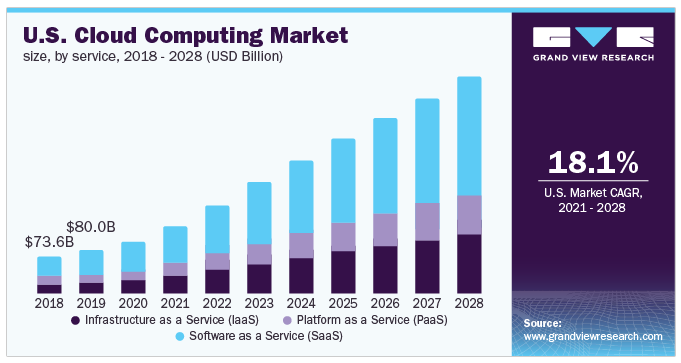
Fig: U.S. Cloud Computing Market, Source – Grand View Research
What these reports signify is a steady adoption of cloud services by businesses across the world to tackle the entire range of operations they do. Application development in cloud computing provides an extensive, flexible, and affordable way to implement cloud service models. Meanwhile, numerous leading players in the information technology sector now compete to deliver flexible cloud services for both the public and enterprises.
Increasing competition means better delivery of services and innovations, which can deeply benefit scaling up your business. Hence, now is the right time to deploy a cloud model into your business infrastructure.
What’s Ahead?
- Why does your business need Cloud Computing?
- What are Cloud Service Models?
- Adopting Cloud – Choosing between SaaS, IaaS, and PaaS
- SaaS
- IaaS
- PaaS
- What should you know about DaaS?
- Why is it important to choose the right Cloud Service Model?
- How can Cloud support your Custom Software needs?
- Cloud Service Models SaaS, IaaS, or PaaS: What fits your business?
Why Does Your Business Need Cloud Computing?
You must be wondering! Why do you need to adopt cloud service for your enterprise and what could it possibly do to widen the scope of your operations? Well, the pros of cloud adoption far outweigh its cons, which is one reason why you should consider it in the first place. Here are 3 major advantages of cloud adoption.
Scalable – A cloud service allows quick scaling up and down of computing resources to accommodate your changing needs.
Affordable – You pay less for a cloud service, as it eliminates unnecessary costs involved in hardware upgrades and maintenance.
Secure – By signing up for a cloud service, you are essentially making your data more secure using their industry-grade security protocols.
If you have envisioned a goal of making your business more dynamic, then the cloud is the way. And the question comes down to this: what type of cloud service model would you implement and which one will fit your unique business requirements?
Read more: How Infince, an integrated cloud platform, simplifies business management & collaboration!
What are Cloud Service Models?
Cloud computing services come mainly in three types of service models: SaaS (Software as a Service), IaaS (Infrastructure as a Service), and PaaS (Platform as a Service). Each of the cloud models has its own set of benefits that could serve the needs of various businesses.
Choosing between them requires an understanding of these cloud models, evaluating your requirements, and finding out how the chosen model can deliver your intended set of workflows.
The following is a brief description of the three types of cloud models and their benefits.
1. SaaS
SaaS or Software as a Service is a model that gives quick access to cloud-based web applications. The vendor controls the entire computing stack, which you can access using a web browser. These applications run on the cloud and you can use them by a paid licensed subscription or for free with limited access.
SaaS does not require any installations or downloads in your existing computing infrastructure. This eliminates the need for installing applications on each of your computers with the maintenance and support taken over by the vendor. Some known examples of SaaS include Google G Suite, Microsoft Office 365, Dropbox, etc.
2. IaaS
IaaS or Infrastructure as a Service is basically a virtual provision of computing resources over the cloud. An IaaS cloud provider can give you the entire range of computing infrastructures such as storage, servers, networking hardware alongside maintenance and support.
Businesses can opt for computing resources of their requirement without the need to install hardware on their premises. Amazon Web Services, Microsoft Azure, and Google Compute Engine are some of the leading IaaS cloud service providers.
3. PaaS
Platform as a Service or PaaS is essentially a cloud base where you can develop, test, and organize the different applications for your business. Implementing PaaS simplifies the process of enterprise software development. The virtual runtime environment provided by PaaS gives a favorable space for developing and testing applications.
The entire resources offered in the form of servers, storage, and networking are manageable either by the company or a platform provider. Google App Engine and AWS Elastic Beanstalk are two typical examples of PaaS. PaaS is also subscription-based and gives you flexible pricing options depending on your business requirements.
Adopting Cloud – Choosing Between SaaS, IaaS, and PaaS
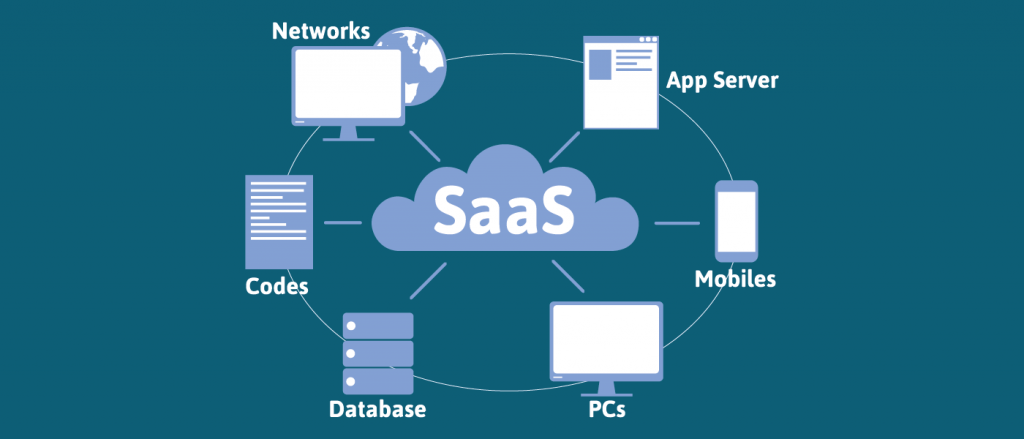
Going through the details of what SaaS, PaaS, and IaaS may have given you a general understanding of these three cloud models. Each of them differs and has a range of advantages and disadvantages that may or may not fit in with your business model.
By correlating each of these cloud models side by side, you could derive a conclusion on whether it suits your business requirements.

SaaS
Benefits:
- Affordable – SaaS is affordable as it eliminates the costs involved in the purchase, installation, maintenance, and upgrades of computing hardware.
- Anywhere Accessibility – With SaaS, you can access the services from anywhere using any device such as smartphones, which eliminates the constraints set by on-premise software.
- Ready to Use – You can quickly set up SaaS services so that they become functional in no time. All it takes is that you sign up for the service to get access to fast and powerful computing resources.
Why Should One Opt SaaS?
With SaaS, communication, transferring of content, and scheduling meetings are made easy. SaaS is the ideal choice for small-scale businesses that do not have the necessary budget and resources to deploy on on-premise hardware. Besides, companies that require frequent collaboration on their projects will find SaaS platforms useful.
Studies reveal that Supply Chain Management, Business Intelligence, Enterprise Resource Planning (ERP), and Project and Portfolio Management will see the fastest growth in end-user spending on SaaS applications, through 2022.
Things to Consider Before SaaS Implementation
- Opt for configuration over customization within a SaaS-based delivery model. The configuration will allow you to tailor without changing the core product, whereas, customization will make it challenging to scale with the constant updates and documentation.
- Understand the adoption and usage rates carefully, and set clear objectives to be achieved with the SaaS adoption.
- Compliment your SaaS solution with integrations, and security options to make it more user-initiated.
Read more: Top Trends That Will Transform Cloud Computing in 2020 and Beyond!
IaaS
Benefits:
- Minimize Costs – Deploying an IaaS cloud model eliminates the need to deploy on-premise hardware that reduces the costs.
- Enhanced Scalability – As the most flexible cloud computing model, IaaS allows you to scale the computing resources up or down based on demand.
- Simple Deployment – IaaS lets you easily deploy the servers, processing, storage, and networking to make it up and running in no time.
Why Should One Opt IaaS?
IaaS being the most flexible of cloud models gives the best option when it comes to IT hardware infrastructure. IaaS is the right option if you need control over the hardware infrastructure such as managing and customizing according to your requirements.
Whether you are running a startup or a large enterprise, IaaS gives access to computing resources without the need to invest in them separately. However, the only downside with IaaS is that it is much costlier than SaaS or PaaS cloud models.
According to Gartner’s latest report, the worldwide infrastructure-as-a-service (IaaS) market grew 31.3% in 2018 to total $32.4 billion, and in 2019 it’s projected to be worth $38.9 billion. This growth will continue well into 2022, where it’s expected to be worth $76.6 billion.
Things to Consider Before IaaS Implementation
- Clearly define your access needs and the bandwidth of your network to facilitate smooth implementation and function.
- Plan out thorough data storage and security strategy to streamline the process.
- Ensure a disaster recovery plan so that your data remains safe and accessible at all means.
PaaS
Benefits:
- Minimal Development Time – PaaS reduces the development time since the vendor provides all computing resources like server-side components, which simplifies the process and improves the focus of the development team.
- Multiple Programming Language Support – PaaS offers support for multiple programming languages, which a software development company can utilize to build applications for different projects.
- Enhanced Collaboration – With PaaS, your business can benefit from having enhanced collaboration, which will help integrate your team dispersed across various locations.
Why Should One Opt PaaS?
PaaS is the preferred option if your project involves multiple developers and vendors. With PaaS, it is easy to create customized applications as it leases all the essential computing and networking resources. Being a different model, PaaS simplifies the app development process that minimizes your organizational costs.
Besides, it is flexible and delivers the necessary speed in the process, which will rapidly improve your development times. A typical disadvantage with PaaS is that since it is built on virtualized technology, you will have less control over the data processing. In addition, it is also less flexible compared to the IaaS cloud model.
A study by Market Reports World estimates that the global PaaS market will grow at a CAGR of 24.17% during 2019-2023 and will get valued at 28.4 billion USD by the end of 2023.
Things to Consider Before PaaS Implementation
- Crucially analyzing your business needs, decide the automation levels, if it needs to be self-service or fully automated.
- Clearly determine whether to deploy on a private or public cloud.
- Plan through the customization, and efficiency levels.
What Should You Know About DaaS?
Desktop as a Service or DaaS is desktop virtualization provided through the cloud. DaaS is similar to the server deployment done in IaaS. However, it strictly specializes to offer desktop operating systems. As mentioned earlier in this blog, according to Gartner, DaaS is expected to have the most significant growth in the coming years, analyzing the 95.4% increase in Worldwide Public Cloud Service Revenue in 2020.
Providing device accessibility from anywhere and at any time, DaaS enables workforce mobility and enhances flexibility. Its offerings are mostly simple pay-as-a-go subscription models which makes it easy to scale up. With DaaS, an organization can rely on data security, disaster recovery, optimum performance, cost savings, and mobility. Enabling an easy to manage and simplified IT environment for desktop solutions, DaaS is now widely adopted amongst small businesses.
Benefits:
- Security – Along with easy accessibility and simplified management of desktops and applications, DaaS ensures enhanced security of data.
- Flexibility – As mentioned earlier, DaaS enables easy accessibility from anywhere allowing maximum flexibility. Seasonal or remote workers and contract employees can stay productive at all times with streamlined access to applications, remote desktops, and data on any cost-effective device.
- Cost savings – Providing easy monthly and yearly subscription plans, DaaS reduces the capital expense and makes operational expenses more predictable.
- Business continuity – Providing disaster recovery support, and easy access to apps and desktops to the workforce, DaaS helps running a business at all times, even during natural disasters and pandemics.
Why is it Important to Choose the Right Cloud Service Model?
The rise in remote work culture is increasing the need for streamlined collaboration and secured storage facilities. Cloud computing is one technology that has the potential to drive efficiency and opportunities for companies functioning remotely, that too without the need for significant capital investment. It goes without saying that the Cloud is rightly the superhero in town now! However, it is essential to choose the right cloud service model to truly gain the advantage and remain competitive in the market.
The ultimate requirement of enterprises today is to quickly adapt to the growing market changes and to meet the rising consumer demands. Achieving this is however not possible without leveraging the emerging technology, which is quite complex in itself. But implementing the right Cloud Service Model, that fits the business objectives, enterprise infrastructure needs, provides the right flexibility to scale, adapts easily to the company process, products, and service techniques will amplify and smoothen transformation for business, that stands imperative today!
How Can Cloud Support Your Custom Software Needs?
Although the Cloud is highly adopted for cost-effective IT operation needs, the cloud’s capabilities and offerings are now not limited to data storage for the ease of system restoration. Cloud has now the ability to run a company’s IT operations in bulk including setting up and running an environment for custom software development. The Cloud Service Models Infrastructure as a Service (IaaS), and Platform as a Service (PaaS), have just the capabilities to provide an ecosystem to custom software applications.
Find out which cloud service model fits better for your custom software development needs from the infographic below:

Cloud Service Models SaaS, IaaS, or PaaS: What Fits your Business?
The growing adoption of cloud services is a sign of the rapidly changing business environment. The forecasts and reports shed light on how the cloud is going to become the primary computing resource for enterprises in times to come. So, that suggests that your business should quickly adopt a cloud platform to leverage its wide-reaching benefits and in turn help you grow.
But, what cloud model would be apt as a solution that delivers the results that you are looking for. The above-mentioned details about SaaS, IaaS, and PaaS may have provided you with a peek into the nature of these cloud models. Each of them differs and it is up to you to address your business requirements and select one that you find apt for your needs.
To summarize, SaaS would suit your business well if you need cloud-based software like email, CRM, and productivity tools. IaaS is the perfect option if you require a complete virtual computing platform with powerful resources. If your requirement is a platform to develop and test your software and applications, then it is better to opt for PaaS.
Get in touch with our experts today to know more about our cloud services.
Stay up to date on what's new

Featured Blogs
Stay up to date on
what's new



Talk To Our Experts
Progressive Web Apps: New Cutting-Edge Trend in Web Development
Speed and convenience have become crucial in keeping online shoppers engaged. Progressive Web Apps development is a solution that allows the shopper to enjoy an app-like experience via a website (using web browsers). Users can install the PWA application from the browser window and access it just like a native app. In addition, progressive web apps improve the quality of your web applications, making them reliable, fast, and engaging.
Are you considering PWA for your business growth? Is it worth exploring this option? This blog will help you take a closer look at why Progressive Web Apps are turning to be the new cutting-edge trend in web development.
What is a Progressive Web App?
Frances Berriman and Alex Russel coined the buzzword “Progressive Web Apps” in 2015. To date, PWA has been a big player in this mobile-first world. Progressive Web Apps (PWA) have caused digital marketers to rethink how they design and deliver sites.
Progressive Web Apps can deliver a blazingly fast and slick app-like shopping experience to the end-user. It combines the best of two worlds: your website and the native application. It can be called a hybrid app as users can now browse your website on their mobile. Besides, PWA promises to solve two vital issues:
- Performance and usability
- Mobile-web conversion rates
Read more: Native Apps vs. Web Apps: Choosing the Best for Your Brand
Business Benefits of Progressive Web Apps
Several companies that focused their efforts on PWAs instead of having a separate native app have experienced increased conversions. A best case in point is the world’s largest online B2B trading platform, Alibaba.com. Alibaba.com increased its conversion rate by 76% across browsers after upgrading its website to PWA.
Here’s how your business can benefit from PWA:
1. High-performance rate
Response time is crucial for audience engagement and better conversion rates. PWA responds quickly as the browser uses caching to save the elements of the layout that are repeated in the template. This improves the speed of downloads and reduces page load time. Subsequently, better performance leads to a better user experience, which in turn increases customer retention rates.
2. Ease of use across multiple devices
Progressive Web Apps are built with a responsive layout in mind for an improved user experience. A responsive design will fit into any size of the screen with ease. In other words, PWA will adjust the experience as per the device screen size. You can further improve the user experience with a PWA manifest file that controls the full-screen view.
3. Seamless browsing experience
A traditional website is virtually useless without a stable internet connection, but not a Progressive Web App. PWA can be easily viewed offline as service workers automatically cache important application features and information from the user’s last online access. This way, the user can access it without any network. Plus, you can add a brand logo, product descriptions, and few advanced features to your offline page.
This is an additional incentive for shoppers to choose businesses with a Progressive Web App over those that use native apps. Such a seamless browsing experience rewards you with better engagement rates and customer retention.
4. Resembles native-built applications
PWAs can be designed to look and behave like native apps, or they can be designed to let users know they are browsing the Progressive Web App. Regardless of the developer’s choice, it can contain a complete set of traditional app functionalities with database access. The best part is that you can seamlessly integrate the application into an existing website or an app.
Watch Video: Fingent can help you choose the right mobile app development approach by evaluating your requirements.
5. No installation is needed
Shoppers can download your app directly onto their devices. Once downloaded, it gets its own icon on the screen, just like a traditional mobile application. This will avoid the slow and complex installation process, improve user experience, and reduce user abandonment.
Here is another way it can benefit you: users can easily access the PWA via a URL. In other words, a user can easily share this link with a friend contributing to increased leads.
6. No manual updates are required
Native apps must be updated periodically through mobile internet or a WIFI connection. Such updates can consume large amounts of data, which may be costly for some users. Fortunately, Progressive Web App updates are performed “on-use,” much like how a website is updated.
7. Low development cost
Developing a mobile app can be a costly process, especially for small businesses and startups. Thankfully, PWA development is much cheaper than traditional app development but provides a better option for companies to generate a positive ROI.
Read more: Mobile app development: 4 tips to consider
8. Wide range of features
The most prominent feature of PWA is push notifications. Publishers and developers can use this feature to implement creative advertising solutions. As the push notifications appear on a shopper’s device screen, it is read more often than emails or updates on social media. This can lead to valuable brand awareness and promote products or services.
9. Improved app and data security
Security has been a concern for both users and developers. According to new standards of web design, all customer information must be moved to HTTPS. So it is highly convenient to launch Progressive Web App within a safe environment. Moreover, it builds customer confidence in the security of their personal information as they enter sensitive data into your PWA.
10. Low data and low storage
Data is costly in some developing nations. That is why it is a bonus that Progressive Web App consumes only a fraction of data usage compared to native apps. Moreover, it does not take up significant storage space on devices, so users are more inclined to use a lighter app on their smartphones. Also, it contributes to better performance.
Read more: Building a Business Mobile App in 2021? Here’s What You Need to Know
Progress with Progressive Web Apps
Progressive Web Apps are the future of web-hosted apps as they can overcome the inherent limitations of web performance and insufficient or unavailable internet connections. Since PWAs can run on any modern platform, soon they will overtake truly native apps. Yes, PWAs have the potential to change the way the web works. However, Progressive Web Apps will not replace websites and mobile apps altogether. It is still in its infancy. To know which option is best for your business, have a chat with the technology experts at Fingent.
Stay up to date on what's new

Featured Blogs
Stay up to date on
what's new



Talk To Our Experts
The Significance of Odoo Migration and How to Do It?
Odoo is an open-source ERP software that comprises an integrated suite of business modules such as eCommerce, accounting, warehouse management, project management, financial management, customer relationship management (CRM), manufacturing, and purchasing. These modules ensure seamless and efficient communication with each other to exchange information.
Read more: 5 Salient Features of Odoo that Make it a Reliable ERP for Enterprises
Odoo ERP can be used by businesses of all sizes and is available in both cloud or on-premise versions. Odoo is open source and highly customizable, allowing developers to access the code and make changes in the module based on their business needs. Odoo ERP can be easily integrated with payment processors and external shipping systems such as UPS, eBay, FedEx, Amazon, and QuickBooks.
Read more: 5 Reasons to Integrate Your E-commerce Application with Odoo ERP
So, if you are new and planning to implement Odoo ERP for your business, you should consider the most recent and latest version of Odoo, that is, Odoo 14.0.
However, if you are already leveraging Odoo and thinking of migrating to Odoo 14, you need to assimilate the situation before migrating.
Odoo migration involves two parts:
- Data migration
- Odoo apps migration
You can migrate both your company data and the apps used in the older version of your ERP. This migration process requires expertise and an experienced Odoo ERP partner to achieve it. Your older data must be optimized for the newer version smoothly and is best done by a professional Odoo ERP implementation partner like Fingent.
Why migrate to the latest version of Odoo ERP?
Undeniably, the latest versions of Odoo include improved features such as security, speed, and stability. Migrating to the latest version indicates that you are ready to update your system and move forward. Moving forward does not mean that you lose your old data and turn to new data. Migration ensures that all the previous data is kept intact while stepping into the new one.
The latest version, Odoo 14 got released in October 2020. As businesses are ever-changing, the new version comes with many added or deleted features as found optimal by Odoo. This is needed to ensure the ERP keeps running at its best performance and also delivers high performance. It is considered to be four times faster than Odoo 13. So, if you are looking for speed, then you can switch to Odoo 14.
Top features of Odoo 14
Some of the features of Odoo 14 are:
1. Improved user experience
Odoo is a great competitor to big names like Oracle, Dynamics, and SAP. Odoo 14 has added more shortcut keys to control the system faster, improving the system speed and more on-click features to help you save time. There are more widgets in the list view that allows you to send messages directly to your colleagues within a single click.
2. Automated CRM
CRM is a powerful tool that provides your company with a better insight and focuses more on clients and not on the data input. The insight helps you forecast sales or find information about the clients easily. In the absence of a CRM, the salespeople can randomly fill the customer’s information, making it difficult for other team members to follow up or get complete sales information.
As Odoo 14 CRM is automated, you can add and search for customer’s data accurately and quickly.
3. Outlook plugins
This feature automates the communication logging and allows you to communicate with the clients automatically in the CRM. It also helps sales managers track the communication of their subordinates.
4. To-do activities list
Odoo 14 helps salespeople focus on selling instead of data input. The to-do activities feature allows the salespeople to quickly check the to-do list, the next activity, and its priority with its impact every day. This feature comes with an improved follow-up section that helps salespeople send an email or SMS to the potential client directly from the CRM.
Points to consider before Odoo migration
1. Performance
Odoo 14 is designed to deliver more both in terms of performance and features. It includes additional features that can benefit new businesses. The new features ensure the business processes are carried out as smoothly as possible. However, you must make sure to understand the purposes and needs of your business before you avail of the updated version.
2. Deleting a few features
While the new version includes new features, some of the old features have been revoked by Odoo. So, it would help if you had an idea about what features will be lost in the newer update. This is where an Odoo ERP implementation partner like Fingent can help you. Our Odoo consultants can help you migrate to the latest version of Odoo without losing your crucial company data.
Read more: 6 Ways Odoo ERP Customization Can Benefit Your Business
3. Downtime
An update would mean that your business operations would be affected in the meantime. So, you must be prepared to overcome this downtime if you opt for migration. You can use the pilot version to run the platform with updates in the background. However, it is not possible in the live environment. You can discuss this in detail with the migration expert at Fingent.
4. Cost
The cost of the migration process may vary depending on your customized business requirements. Understanding the need for the latest update and knowing if the expense is the right investment for your company is essential. You can consult the experts at Fingent to get an estimate of the Odoo migration expenses for your business.
While migrating your old Odoo versions to newer and better ones is essential, it is a complex and tedious task. So, it is vital to have a good Odoo migration partner, which is why most businesses entrust us with Odoo ERP migration.
Read more: Why Choose Fingent as Your Odoo ERP Partner
Odoo migration: How to migrate to the newer version?
The Odoo migration process is done in two parts:
Part 1: Data migration
The company data present in the Odoo platform is of utmost importance and cannot be lost under any circumstances. This data requires some adaptation to work in sync with the new version. To make sure your data is suited for migration formulation, your information, such as charts, tables, contacts, etc., will be carried out.
Part 2: Odoo apps migration
The Odoo apps functional in the older version are used for specific needs and cannot be lost or compromised in the process of updating. Necessary changes to the existing applications or developing new ones will need to be done to meet the needs of your business.
The migration of applications and data will enhance the platform’s functionality without losing your company data.
To know more about Odoo migration and how we can help achieve it successfully, please contact us.
Stay up to date on what's new

Featured Blogs
Stay up to date on
what's new



Talk To Our Experts
Being an Official Partner of Odoo, Fingent has always catered to the needs of various customers and streamlined their operations, thus saving their costs, time, and resources. In this post, you will see how Odoo ERP implementation helps retail management.
Odoo ERP: A Highly Customizable Cloud-based Platform for Retailers!
The retail industry is one of the primary beneficiaries of digital transformation. In 2010, eCommerce accounted for only 5-6% of the aggregate retail sales in the US. The industry has witnessed phenomenal growth over the past decade with the development and adoption of retail technology, ERPs, eCommerce applications, custom retail solutions, and stiff market competition. At present, online retail sales in the US account for 21% of the total retail purchases. Isn’t that mind-blowing?
The paradigm shift from the traditional operating landscape to a digital world presents both opportunities and challenges. Many people look for products online, make buying decisions based on social media reviews, and order products to be delivered home. They even use the internet to search local shops, order online and collect from nearby stores (click & collect) or find retailers that offer discounts in their area. The message is clear: physical/ in-store retailing also needs to pace up with the change.
To overcome the challenges in managing physical and digital selling, retailers need to adopt a modern enterprise resource planning (ERP) system.
Read more: 5 Reasons to Integrate Your E-commerce Application with Odoo ERP
Today, ERP is extensively used to simplify and automate customer relationship management, project management, accounting, compliance, inventory, and supply chain operations. ERP is a reliable investment for business owners as they can control and monitor their operations, get reports, and gain insights on consumer behavior and market situations.
Odoo ERP for Retail Management
ERP software allows integrating the core processes to run a company in one place, such as finance, manufacturing, HR, supply chain, inventory, procurement, tracking, transactions, etc. It also integrates all the data and related business processes of an organization.
Odoo ERP is a popular, open-source, cloud-based business management software that helps manage various business needs such as manufacturing, finance, inventory, point of sale (POS), eCommerce, purchase, logistics, etc. Odoo is an intelligent ERP system that allows retailers to integrate their whole data and all the processes associated with the retail industry. For retailers, Odoo is a perfect choice that increases profit and enhances productivity as it provides comprehensive solutions that can seamlessly integrate with eCommerce.
Read more: 5 signs which imply that your business needs Odoo ERP
How Odoo ERP Benefits Retail Management
Following are the significant benefits of using Odoo ERP in retail:
1. One-step checkout
In online shopping apps, the checkout stage tends to have several processes spread across different web pages. This can put off some customers who don’t want to spend their time navigating through each. Odoo eliminates these multiple processes by offering a one-step checkout that is fast, convenient, and intuitive. It has the potential to reduce checkout abandonment and thereby increase sales.
2. Craft stunning product pages
For eCommerce websites, high-quality product pages are crucial to gain maximum traction. Long descriptions with dull-looking pages are outdated. Odoo ERP lets you build beautiful and stunning product pages with a simple drag and drop feature. You can also customize your online store’s look, layout, color, and theme with Odoo and make last-minute changes to meet the demands and expectations of your clients. You can also make changes and enhancements at regular intervals to add more features to your store. Make sure that your digital store is mobile responsive to be compatible with the changes and new features.
3. Payment module integration
Having different payment options can enhance the customer experience. With Odoo’s plugins and extensions, retailers can integrate and customize various modules like wallets, cryptocurrencies, credit and debit cards, and UPI. It also supports PayPal, PayUMoney, Buckaroo, Sips, Stripe, Ingenico, Adyen, and Authorize.net.
4. Sales, purchase, and finance management
Odoo offers non-retail and retail companies different sales management processes. Odoo has a Point of Sale (POS) module, which is integrated with the sales and inventory module. This module helps retailers track stock and commodities in real-time. The module also allows for the use of biometric devices to log in and out. It’s compatible with any hardware and doesn’t require installation. What’s more, the POS remains operational even when offline.
Read more: How Odoo ERP Simplifies Sales Management in Your Organization
5. Inventory management
It’s a known fact that inventory management in a volatile and dynamic consumer goods market is an arduous task for many retailers. With several issues such as excess inventory or out-of-stock scenarios, inefficient inventory management processes result in financial loss and lead many retailers to bankruptcy.
Odoo ERP offers inventory management as its integral feature, where it stores details of an organization’s entire inventory, including the individual product details. Odoo enables retail managers to keep track of crucial information such as:
- The present status of the inventory
- Items that will run out of stock
- Shelf life details of each product
- Notifications related to product expiry
- Ability to make demand forecasts based on past trends and customers’ online behavior and buying habits
Odoo ERP enables retailers to gain a competitive edge by modifying inventory to meet the fluctuating customer demands.
Read more: Fingent’s new plugin facilitates the scheduling of Zoom meetings from Odoo!
6. Manufacturing and production
Retailers who are also engaged in manufacturing and production can use Odoo’s module to help run functions. The Manufacturing module can assist in creating bills of materials (BoMs), managing semi-finished products, subcontracting manufacturing, etc. It can also help in configuring work centers and managing and configuring kits.
7. The Cloud Advantage
- Odoo solutions are cloud-based, allowing retailers to access their e-commerce stores from anywhere in the world.
- Odoo is flexible, customizable, and scalable, making it especially ideal for small and medium-sized enterprises (SMEs).
- Odoo is an affordable ERP solution with the maintenance fees included in the license fee.
In a nutshell, Odoo ERP serves as a high-performance retail management system where retailers can manage everything on a single system. It can bring tremendous benefits to the retailing industry. They can integrate Odoo’s various business apps such as Sales, Accounting, Customer relationship management (CRM), Inventory, etc., with Odoo e-commerce.
The Odoo App Store features nearly 10,000 apps that connect to the same database on Odoo’s own servers. A testament to Odoo’s popularity is in the numbers: it has more than 5 million users worldwide, from start-ups to large enterprises.
With a simple checkout process, robust customer portal (order tracking, advanced shipping rules, and return management), order review, and wish lists, Odoo ERP provides real-time information to users.
Read more: Why Choose Fingent as Your Odoo ERP Partner
Fingent has an ace team of Odoo developers that offers consulting, development, and implementation services. Whether you want to integrate Odoo ERP with your existing e-commerce store or build an online store from scratch powered by Odoo integration, give us a call right away.
Stay up to date on what's new

Featured Blogs
Stay up to date on
what's new



Talk To Our Experts
How Logistics Management Software and Technology Will Transform Businesses in 2021
Without logistics software management, Pfizer cannot become one of the world’s largest sterile injectables suppliers in 2021. Neither can they store, transport, and distribute the COVID-19 vaccine to multiple countries, maintaining ultra-low temperatures. Monitoring temperatures, optimizing delivery routes, managing cold storage, tracking vaccines in transit, overseeing distribution – all these prove that the logistics and supply chain sector has been at the forefront of tech disruption in 2021. Various governments are taking measures to expedite vaccine distribution to the masses; shoppers have increasingly moved to online shopping – 2021 is set to witness the increasing adoption of logistics management software.
Read more: 6 Tips for Logistics and Supply Chain Leaders to Plan COVID-19 Vaccine Distribution Strategies
The Impact of Technology in Logistics
Technology continues to disrupt logistics and supply chain processes by changing it altogether from its core. Research and Markets reports that the increasing use of IoT and emerging technologies across industries will accelerate Connected Logistics’s adoption. The Global Connected Logistics market is projected to grow at a CAGR of 17.5% during 2021 – 2026.
Consequently, logistics will become more refined and fast, changing the way materials, goods, freight, sales orders, inventory, and production are managed.
As efficiency and speed become the determining factors, logistics need to adopt a new approach to deal with the rising demand and complexity of processes. The industry needs a viable solution that manages the flow of things so that the right product reaches the customer within the specified time.
Logistics software adoption streamlines operations and removes process hassles. Organizations that invested in logistics management software have produced good outcomes with noticeable improvements in process, operations, and delivery.
This article attempts to explain all that you need to know about logistics management software, including:
- What is Logistics Management Software?
- Challenges in logistics management
- Pros of a having a logistics software
- 2021 trends that reshape logistics management
- Choosing the right Logistics Management Software
- Checklist of essentials in a Logistics Management Software
- How logistics software improves efficiency
- The future of supply chain
What is Logistics Management?
Logistics involves the flow of things from their point of origin to the point of consumption, usually general customers or businesses. The selection of vendors, transportation means, routes, and delivery methods constitute an essential part of logistical operations.
Logistics management is a part of the supply chain that uses planning and implementation to store and deliver goods and services to the customer. It coordinates several critical activities of the supply chain that range from product development to commercialization.
Typically a logistics management system includes the following:
- Inbound and outbound transportation management
- Warehouse management
- Fleet management
- Processing orders
- Inventory control
- Managing third-party logistics service providers
- Planning supply and demand
Watch Video: Top Challenges Faced by Logistic Management
Logistics management constitutes several functions such as production planning, sourcing, procurement, packaging, and dispatching. It also involves finding the suitable means to deliver goods and services to the end-user. Inbound and outbound traffic is vital in logistics management.
- Inbound logistics is a linear flow of raw materials from suppliers into a warehouse and then a production unit.
- Shifting the products from the warehouse inventory into the hands of the customers falls under outbound logistics.
An example of inbound and outbound logistics at play is that of a manufacturer of electronic goods, which requires several raw materials in the form of components, nuts, bolts, cables, casting, packaging cartons, etc., to build products.
Challenges in Logistics Management
Logistics is prone to several issues that occur primarily due to simple human errors or other factors. Weak decisions usually result in delays in the transport or delivery of goods, leading to customer dissatisfaction. Besides, another challenge that logistics face generally is in the safe transportation of goods. The goods can become damaged or faulty if not handled accordingly while in transit.
Customer demand has also become higher as they want more transparency in the delivery process. Moreover, logistics and supply chains are facing the still unsolved issue of cost control. The rise of fuel charges combined with a steep increase in energy, freight, and labor rates put further pressure on logistics providers.
Effective risk management and managing the relationship between the suppliers and partners are also vital. A reliable solution that covers all these individual challenges in logistics is thus becoming a necessity. The use of logistics management software (LMS) can streamline logistical operations and guide a logistics provider or business to deal with them appropriately.
What is Logistics Management Software?
Logistics Management Software (LMS) simplifies logistics operations by refining the production cycle and making it easier to access important information quickly. A logistics management software helps businesses manage the various processes that go into the production cycle from the delivery of raw materials to shipping the finished products to the consumers.
Logistics software has become broader in its scope and functionality to deal with a vast array of operations and processes. It shares similarities with supply chain management software (SCMS), which contains tools that help deal with transactions, processes, and suppliers. The functionality of a logistics management software extends to areas such as:
- Processing customer requests
- Processing purchase orders
- Inventory Management
- Suppliers Management
- Sales and Distribution
A logistics management software gets rid of all the conventional approaches like paperwork and spreadsheets to simplify management. It comes in three variations: warehouse management systems, enterprise resource planning systems, and integrated supply chain management suites.
Companies with an in-house logistics or supply chain division and third-party logistics providers utilize any of these different versions according to their requirements to efficiently manage their logistical and supply chain operations.
The Pros of having a Logistics Software
In logistics, handing over the process to a logistics management software has several advantages. With logistics management software, a company or 3PL (third-party logistics) provider could avail of the following benefits.
- Refine Transportation: Transportation is a crucial area of logistics. It incurs the most charges in the form of fuel, energy, labor, motorway tolls, and shipping fees. Relying on logistics software can help manage the various transportation means and leverage the operational data for process automation. Logistics management software makes it easy to analyze data and make relevant decisions for reducing costs maximizing efficiency.
- Faster Delivery: The logistics and supply chain industry faces several issues that affect delivery and lead to delays. By incorporating logistics software, businesses can rapidly deliver their products to customers. A logistics management software can improve delivery speed by making meaningful interventions in the production cycle and choosing the suitable carrier. It ultimately reduces shipping delays to a great extent.
- Minimize Human Errors: Another notable advantage of having logistics management software is in reducing human error. Manual analysis of vast quantities of transportation data is difficult, time-consuming, and prone to errors. A logistics software can process these data without any mistakes in less time, seamlessly pushing forward the operations with minimal/nil delays.
- Automates Functions: Process Automation is a tremendous boon of logistics software integration. Certain functions like creating shipment routes, load planning, and tendering of load to carriers are easily automated and managed by using logistics software. Moreover, it eliminates paperwork, which helps deal with the processes efficiently and timely.
- Reduce Costs: Logistics software can automatically compare different shipping services, delivery agents, and transportation methods to find the least pricing ones. The other way logistics software reduces costs is by lowering the expedited shipments through improved shipment planning.
Read more: How Transportation Management Systems Benefit Third Party Logistics (3PL) Service Providers
2021 Trends that Reshape Logistics Management
The demand for logistics software management has peaked with the widespread popularity of e-commerce in 2021. The onset of COVID-19 is also a reason behind the peak in demand for logistics technology. As a result, logistics is constantly evolving to accommodate each industry’s rising requests that depend on it. One area where logistics has transformed is the digitization of its processes and resources. In 2021, the industry is expected to embrace the cloud, mobile, and emerging tech to transform logistics operations. Here are some of the top tech trends that will influence logistics and supply chain in 2021.
1. Artificial Intelligence
Logistics companies will use AI to identify patterns in data and churn insights. It will help advance operations such as intelligent transportation, route optimization, demand forecasting, budget planning, etc. McKinsey reports that AI-driven logistics optimization can reduce costs through real-time forecasts and behavioral coaching. The potential incremental value of AI in the logistics and transportation industry (89%) will be more than other analytics techniques.
Read more: How AI is Reshaping the Supply-Chain and Logistics Industry
2. Warehouse Robotics
Over the last few decades, innovative logistic robotic companies have worked hard to mesh AI and machine learning, better sensors and response capabilities, warehouse management software, or logistics management software. Recently, warehouse robotics in the supply chain has picked up pace exponentially. There has been colossal funding and investment in the industry. For example, Alibaba invested $15 billion into robotic logistics infrastructure, and Google invested $500 million into automated logistics for JD. It is also estimated that the global market for warehouse robotics in the supply chain will reach a market value of $22.4 billion by the end of 2021.
Read more: How Robotics in Logistics Helps Improve Supply Chain Efficiency
3. Cloud Computing
Cloud integrated logistics management software allows having real-time price updates, inventory, and tracking. Cloud-based logistics software enables real-time accuracy and 360-degree management of processes and systems. You can track a product through its lifecycle, right from ordering to distribution. It allows to significantly cut down the costs of lost products, missing deliveries, locate a shipment at any stage of transport, and reroute a misdirected shipment. Cloud-based logistics software allows everyone in a trade network to communicate and share data in real-time, make decisions quickly, and scale on-demand.
4. Contactless last-mile delivery
In a pandemic-troubled world, contactless delivery is more critical than ever. eCommerce companies and carriers face increasing pressure due to the surge in online shopping. It’s crucial to stay agile by ensuring business continuity. At the same time, it is also vital to remain safe and meet delivery needs. Electronic parcel lockers, contactless parcel delivery and collection, and self-service pick-up automate delivery processes to reduce physical interactions between customers and delivery agents.
Watch video: Custom Web Application Developed to Enable Smarter Locker Management
Custom logistics software applications can help fulfill the increasing demand for last-mile delivery. Fingent helps build healthy tech partnership ecosystems to ensure uninterrupted supply and distribution of your products and services.
5. Blockchain
Blockchain, also known as the distributed ledger technology, offers the ability to record transactions between parties securely and permanently. The shared and secured databases enabled by blockchain helps in avoiding intermediaries and third parties that verify, record, and coordinate transactions in a supply chain. Blockchain helps increase the traceability of the material supply chain, improve the credibility and trust of shared data, digitize physical assets like contracts and critical documents, streamline administrative processes, reduce costs, and enable effective auditing of supply chain data.
Example of blockchain application in logistics: The international logistics giant DHL uses blockchain-based serialization of pharmaceutical drugs and products to ensure that:
- the products come only from legitimate manufacturers,
- are not counterfeit, and
- are adequately tracked and traced through their journey from origin to consumption.
6. Predictive Analytics
The emergence of sensor technologies and AI has contributed heavily to the rapid growth of predictive maintenance in the logistics industry. Supply chain leaders want to utilize data effectively to optimize predictive maintenance, forecast demands, adjust inventory levels, improve cold chain transportation, and protect the integrity of the supply chain. Smart and optimized data management through predictive analytics and AI allow logistics providers to refine and transform the supply chain in 2021.
Opting for the right Logistics Management Software
With the trends shifting logistics management in a progressive direction, the need for software solutions in the field has become indispensable. Businesses, whether focussing on e-commerce or delivering services, can benefit from having logistics management software. However, the real question is finding the right kind of logistics software since the requirements vary for each business.
Read more: How to Pick the Right Logistics Management Software
A checklist of essentials in a Logistics Management Software
Before settling on software for logistics management, it is vital to understand the requirements and challenges a business faces daily. Carrying out a detailed analysis can help identify deficiencies in the existing logistical operations of a business. Besides that, it can suggest measures to redeem any discovered shortcomings in the cycle.
When deciding on logistics management software, there are several essential factors to consider. Firstly, it should contain a basic set of functions that can aid in simple logistical management operations.
Besides that, numerous other things should also be present in the software to tackle the wide base of a business’s logistical operations and processes.
Some of the key features to look for in a potential LMS are:
- Compatible Multi-Client Architecture: A logistics software that comes with multi-client architecture support is necessary if a business handles multiple customers. Software with inventory and purchase orders has more emphasis since it deals with several customers simultaneously or in different phases.
- Forecasting: The ability to forecast is a needed trait in logistics and supply chain management software since it can bridge gaps in supply and demand by enhancing the business processes. Demand, supply, and price forecasting can help supply chain management with proper production scheduling, better customer satisfaction, and minimized out-of-stock scenarios.
- Finance Integration: Having tools that integrate the supply chain’s financial side is another critical software requirement. Vital financial aspects like general ledger, account payables, and receivables can help manage the bookkeeping and records of transactions conveniently when included in logistics software.
- Inventory Tracking: Having an inbuilt inventory tracking feature can make logistics management software more dependable. Logistics involves transactions of various kinds. An inventory control feature enables easier processing while ensuring that the customer gets the invoice on time.
- Customizable and Streamlined Interface: A good logistics management software should contain a streamlined interface that allows for effortless navigation across its chief functions. A customizable logistics software can easily accommodate the unique infrastructure and methods implemented by a business.
- CRM: Logistics software should also cover the customer side. A CRM embedded logistics software allows the customers to know the status of their deliveries. For both inbound and outbound logistics, CRM can answer the customers’ queries and supply them with relevant information and adjustments to the delivery.
- Bill of Lading Creation: As a critical document in the shipping and freight chain, looking for a logistics system that can generate the bill of lading is recommended. This can make it easier to create the bill of lading receipts. It facilitates the seamless exchange of goods under the consignee of the shipper and the logistics company.
Refer the chart below to get a grip on the overall profile of any software logistics management:
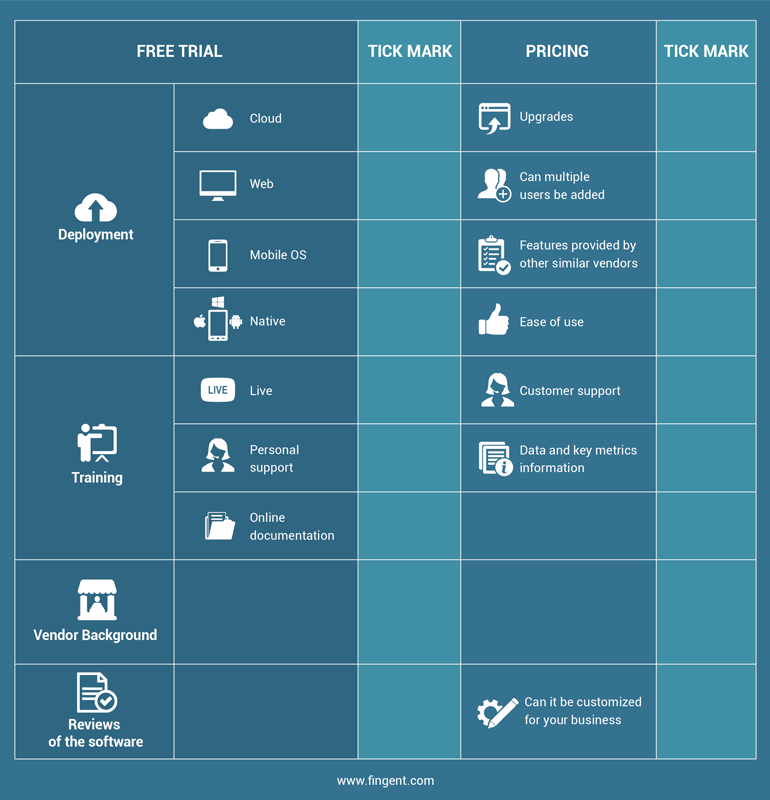
With logistics pushed to the forefront of business operations, leveraging the right technology can make your business compatible with the changing environment.
Outsourcing to a software development vendor will help deploy scalable software for logistics management into your entire supply chain operations. A global software solutions provider like Fingent can give you the advantage of custom logistics solutions built solely based on your requirements.
How logistics software improves efficiency
Logistics management software guarantees more efficiency and control over the logistical and supply chain operations of a business. It means simply substituting the existing manual methods with a software-centric solution. The array of features in a logistics system can refine the entire logistics cycle right from its center. For owners, vendors, and the end customers, using an LSM (Logistics Software management) model opens up improved collaboration, which is the essence of effective logistics management.
Opt for logistics software requires considering all the criteria mentioned above. For a business, it involves addressing their needs and then choosing one that wraps around their existing processes. By integrating an LMS into their operations, companies could reduce their turnaround times and streamline the overall cycle of planning and delivery while keeping up with the customers’ requirements.
Read more: Build or Buy Logistics Software – An End To The Prolonged Discussion
Transitioning into Cloud-Based SaaS: The Future of Supply Chain
With cloud computing gaining momentum in 2021, a whole new way of processing data is unveiled. The tech innovations in 2021 have influenced the supply chain and logistics operations. Increased adoption of supply chain and logistics solutions in 2021 will lead to a shift from the on-premise model to the SaaS model.
Predictions estimate that a subscription-based SaaS model will dominate supply chain management in 2021 and beyond. Adopting a cloud-based supply chain solution offers benefits in the form of flexibility, robustness, and affordability. Free and open-source software adoption has made the Cloud the primary choice for logistics providers and organizations worldwide.
Cloud-based SaaS supply chain solutions offer numerous benefits. It gives a comprehensive outlook on the overall operations in logistics by making processes more transparent and collaborative. Implementing a cloud system reduces the upfront and operating costs. It also offers the ability to scale up with the business needs and enhances supply chain efficiency.
To sum up,
Opting for a logistics solution is one step to simplifying the entire cycle of logistical and supply chain operations. Effective management of each process from procurement to delivery requires a custom logistics management solution that can accommodate each provider’s demands. For instance, an organization lacking an in-house logistics department needs a software management tool that can wrap around their existing methodology and improve it.
By partnering with a vendor specializing in software development, businesses can deploy logistics management software tailored to their requirements. Pioneers in custom software development like Fingent can assist companies from wholesalers to distributors to e-commerce with the advantage of custom logistic solutions. Get in touch with us to spearhead your operations swiftly and efficiently.
Stay up to date on what's new

Featured Blogs
Stay up to date on
what's new














